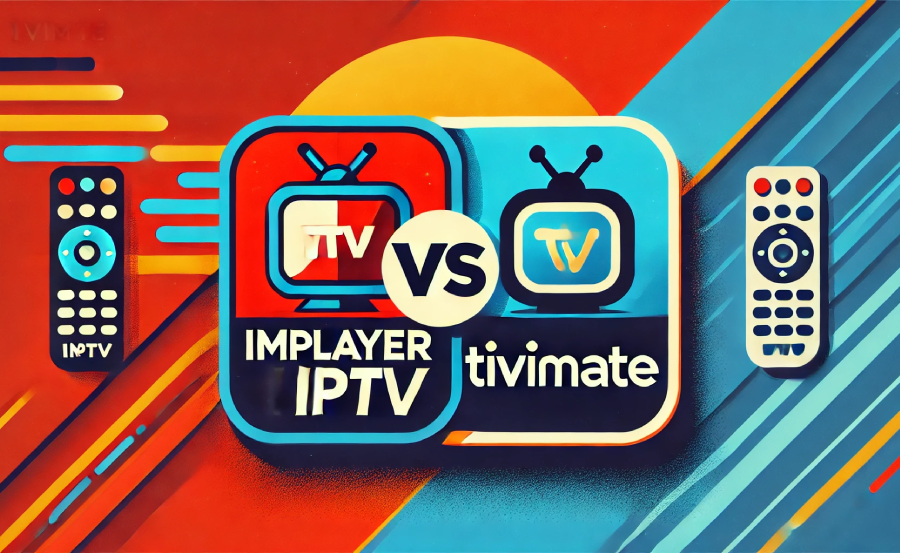As the world of IPTV evolves, viewers are increasingly spoilt for choice with applications that promise a top-tier viewing experience. In the hustle to optimize your streaming life, it’s essential to compare the functionalities and account management features of leading players such as iMPlayer and Tivimate. This article aims to delve into these two applications to determine which provides a superior service. Furthermore, it’s an excellent opportunity to explore why Gen IPTV is the gold standard when it comes to IPTV subscriptions, satisfying your viewing cravings across multiple devices.
Understanding the Basics: iMPlayer and Tivimate
What is iMPlayer?
iMPlayer has swiftly become a household name in the realm of IPTV services. Designed for users who demand more from their television experience, this app offers a streamlined way to access a plethora of channels. Its user-friendly interface lets you navigate effortlessly while accommodating the need for rich media display. But does it tick all the right boxes when it comes to account management? Let’s find out as we progress.
Exploring Tivimate
On the other hand, Tivimate stands out for its highly customizable interface. Serving as a frontend app that works beautifully with multiple IPTV providers, it offers flexibility that many argue is unparalleled. Yet, when it comes to actual management of accounts—something increasingly significant in multi-device households—how does it really compare?
Tip of the Day:
Access the best UK television with Best UK IPTV, offering a premium selection of live TV and movies.
Account Management Features: A Closer Look
Multiple User Profiles
Both iMPlayer and Tivimate offer thoughtful options to manage different viewer profiles. Ideal for families or shared accommodations, this feature can be considered a basic necessity. But, the implementation varies.
- iMPlayer allows for customized user profiles but with some limitations on distinct settings per profile.
- Tivimate excels with seamless profile switching, offering personalized settings across the board.
Device Synchronization
For those invested in IPTV services, device synchronization remains a top priority. While both platforms recognize the significance, the functionalities differ quite a bit.
iMPlayer supports synchronization but often requires manual adjustments. Meanwhile, Tivimate provides automatic syncing with fewer hiccups. However, both fall short without a strong IPTV provider backing them, which brings us to Gen IPTV’s outstanding offerings.
Why Choose Gen IPTV?
Seamless Integration with Applications
Gen IPTV is engineered to pair excellently with both iMPlayer and Tivimate, offering the most comprehensive viewing experience. The subscription supports high-definition streaming across multiple devices with zero buffering. That’s right; no interruptions to your binge sessions!
Multi Device IPTV Subscription Advantages
A key selling point for Gen IPTV is its Multi Device IPTV Subscription. Catering to today’s complex viewing needs, it allows instant access across a range of platforms—be it a smartphone, tablet, or television. The collaboration with apps like iMPlayer and Tivimate is seamless.
- Streamlined Access: Navigate effortlessly across different gadgets.
- Consistent Quality: Enjoy shows in unparalleled high-definition quality.
- Unrestricted Device Usage: Switch devices without losing viewing history.
User Experience and Feedback
iMPlayer: What Users Say
iMPlayer boasts generally favorable reviews, yet it isn’t without criticisms. Users appreciate its interface but often cite inconsistencies with account synchronization. The takeaway? It’s a solid choice, albeit with occasional hiccups.
Tivimate: User Insights
Tivimate is applauded for customization and robustness. Users flag it as a favorite for those who prefer a hands-on approach to managing accounts. However, simplicity can sometimes translate to complexity for less tech-savvy individuals.
The Final Verdict
Deciding between iMPlayer and Tivimate largely depends on users’ individual needs. For those prioritizing ease of customization, Tivimate is the way forward. On the other hand, simplicity seekers might lean towards iMPlayer. However, neither platform reaches perfection without a reliable IPTV provider like Gen IPTV. Offering the world’s best IPTV subscription experience, it fills in where these apps may fall short.
Choosing a compatible system is the key to enhancing your viewing pleasure. Gen IPTV not only aligns perfectly with these applications but elevates them, providing peace of mind and a superior viewing experience.
Frequently Asked Questions (FAQs)

Can I use Gen IPTV with both iMPlayer and Tivimate?
Absolutely, Gen IPTV is compatible with both. It supports seamless integration, ensuring you enjoy uninterrupted streaming regardless of your application choice.
Which app offers better account management, iMPlayer or Tivimate?
While both apps have their strengths, Tivimate tends to offer more detailed customization options for account management, making it preferable for some users.
Does Gen IPTV support Multi Device IPTV Subscription?
Yes, Gen IPTV shines in this area, allowing you to access and manage your subscription across various devices effortlessly.
What makes Gen IPTV a superior choice?
Gen IPTV offers unparalleled streaming quality, customer support, and versatility across devices, making it the top choice for IPTV subscriptions worldwide.
Are there any issues with device synchronization in iMPlayer or Tivimate?
While both apps offer device synchronization, Tivimate generally provides smoother automatic syncing than iMPlayer, which may require more manual control.
Do I need technical expertise to use Tivimate?
Not necessarily, though Tivimate’s extensive customization may appear complex at first glance, it is accessible to most users with a little exploration.
How does Gen IPTV enhance the experience of iMPlayer and Tivimate users?
Gen IPTV provides a robust backend that ensures both platforms operate at their peak efficiency, removing common frustrations like buffering and connectivity issues.
The Future of Home Entertainment: Introducing FireStick

